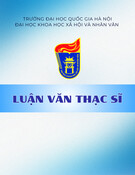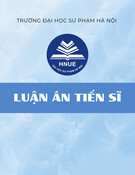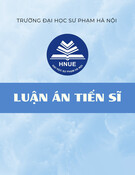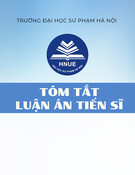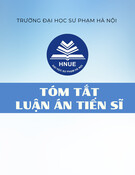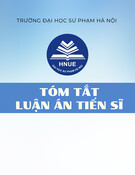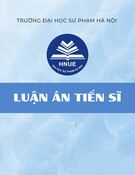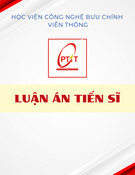
Số hóa bởi Trung tâm Học liệu và Công nghệ thông tin – ĐHTN http://lrc.tnu.edu.vn
ABSTRACT
This research project investigated the use of a book club that met
monthly during school year to enhance 10th form students' English reading
motivation and how the students who were involved in this book club interested
in reading English book through book club's different activities. The research
also examined how each of these students’ reading levels was affected when
they participated in the book club. A book club project was open to fifty VCVB
students to participate in.
Data were elicited through The Motivation for Reading in English
Questionnaire (MREQ) and a program assessment questionnaire. Findings
from the research showed that the students who participated in this book club
opportunity were much more excited about reading in English and their ability
to express themselves increased. It also reflected the fact that students who
participated in VCVB book club experienced a significant increase in reading
quality, reading quantity and preferred reading books over other pastime
activities in comparison with the results at the first book club meeting, all of
which were indications of an increase in reading motivation. On the basis of
the findings, this study would likely benefit students who study English as a
compulsory language at high school and bring them a free community of
readers who like to read in English.






